Eyes and Vision
Part 2: The Many Functions of Vision
Insect vision: many functions
|
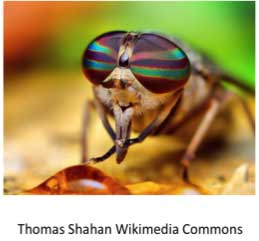 |
Vision, in general, can be divided into many functions:
|
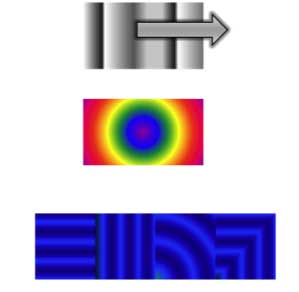 |
| ; |
Polarized light: How it works
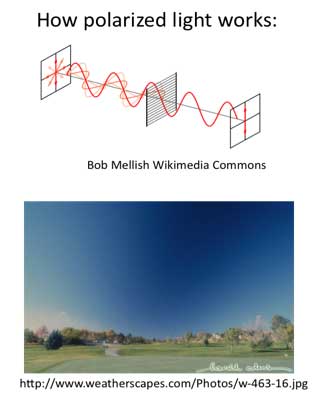 |
|
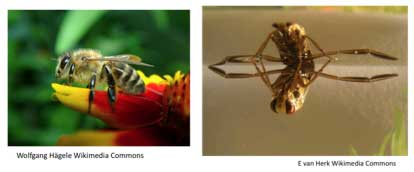 |
|
Polarized light: How insects detect it
The ommatidia layout to detect polarized light:
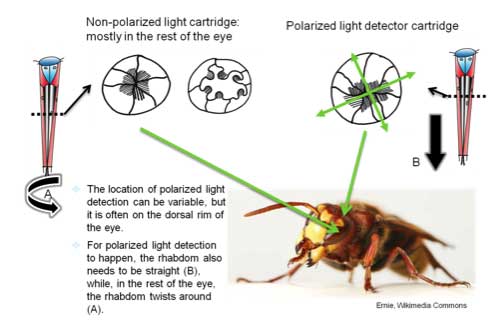
The alignment of the microvilli in the cartridge of the ommatidia acts as a filter to capture only the photons vibrating in the same longitudinal direction as the microvilli (green arrows). This ensures that polarized light moving in the direction of the microvilli is captured by the photoreceptors.
Motion vision
Motion: detecting moving objects and the movement of the world.
There are different types of motion detection:
- Wide field motion detection, such as when the world is moving around you as you move in the environment
- Small field motion detection, which can involve tracking small objects in the world
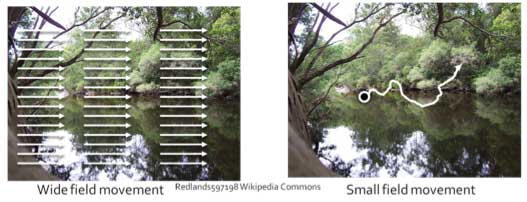
Wide Field Motion vision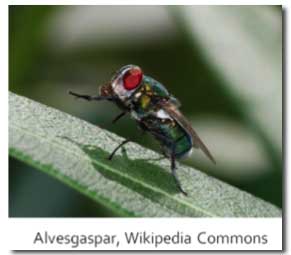
Some of the best-studied aspects of insect vision has to do with wide-field motion in flies, particularly blowflies.
Wide field movement: there are different types of wide field movement insects can do, which can trigger different responses.
A major reason for detecting when the world is moving around the insect is when they are blown off course, rotating, or moving through the world. In order to adjust for any errors, of for them to get around, insects need to know how the world is moving around them.
The nervous system reflects these differences, with specific neural circuits participating in specific types of visual flow (see Neural Integration module).
Also, honeybees use visual flow fields to detect how far they have flown to a food source and communicate this information to their hivemates. Check out this article to find out more:
Srinivasan M.V., Zhang S.W. and Bidwell N. (1997) Visually mediated odometry in honeybees. J. Exp.Biol 200, 2513-2522. (This paper attracted an article in New Scientist)
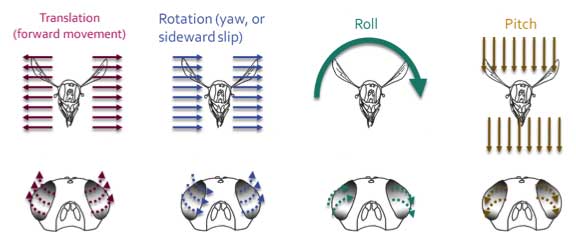
Small field tracking: Dragonflies
![]()
Small field motion detection, which can involve tracking small objects in the world
Dragonflies can detect minute gnats flying in the air and sweep them out of the air.
Small field movement detection is essential for hunting prey.
You can watch some of the prey interception trials on Professor Robert Olberg’s website: http://www1.union.edu/olbergr/index.htm
Colour processing
Detecting different colours in the environment
Light is divided into many wavelengths. Insects, in general, can see from UV into the green wavelengths (while we see from blue to red), which means they see the world in a very different light, literally!
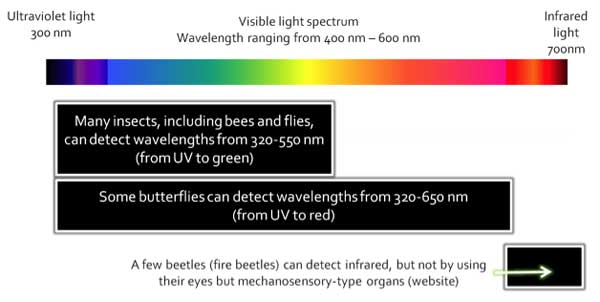
If you want to see how insects might see the world with UV and without red, check out this website: http://photographyoftheinvisibleworld.blogspot.com/
The photographer tried to simulate how a bee might just see the world, which is clearly different to us!
To be able to detect colour, the signals from the different types of photoreceptors are compared to tell whether the input is green, blue, or violet (see Neural Integration).
Colour processing
To be able to detect colour cues, you have to compare signals from different colour channels, which means the photoreceptors need to be divided into different sensitivities to different wavelengths.
To be able to detect colour, the signals from the different types of photoreceptors are compared to tell whether the input is green, blue, or violet (see Neural Integration Module).
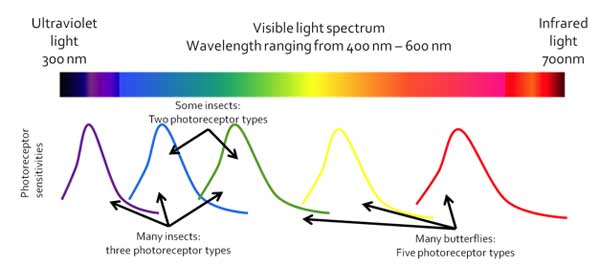
Many insects have two (dichromatic) or three (trichromatic) colour channels (or photoreceptor types)
Some butterflies are pentachromatic, with five separate photoreceptor types (Bendai et al., 1992; Yang and Osorio, 1991)
Pattern processing
Detecting patterns in the visual scene
- Bees and other foraging insects need to use pattern cues to remember flowers and flower patterns
- Pattern processing is also important for navigating the world.
- Mandyam Srinivasan, Martin Heisenberg, Rudiger Wehner, and many other researchers have studied how bees can learn to associate a sugar reward with patterns.
- Look up these researchers online (such as this article: Srinivasan M.V., Zhang S.W. and Rolfe B. (1993) Pattern vision in insects: "cortical" processing? Nature (Lond.) 362, 539-540. (This paper was accompanied by a News and Views article)), and you’ll find out that insects, particularly bees, are very good at discriminating patterns: such as the ones below.


TOPIC REVIEWDo you know…?
|


 Mini-lecture:
Mini-lecture: